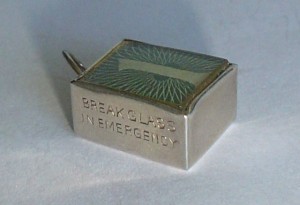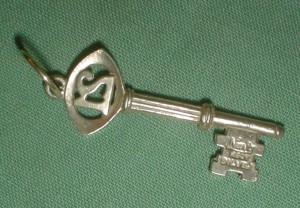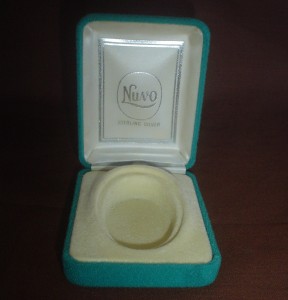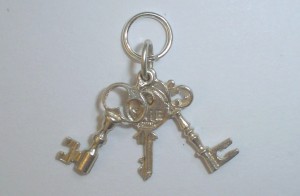When I was in my teens, I was given a silver charm bracelet as a present. It had no charms, just a sturdy curb link chain and a small heart-shaped silver padlock. Every other link had a tiny lion stamped on it – had I known or cared anything about hallmarking, I would have realised that this meant that the bracelet originated in the UK but as it was, I just thought “how sweet”. The idea was for me to gradually add charms to the bracelet, which I could buy myself when I had spare cash, or acquire as gifts. Not being very interested in jewellery back then I simply put the bracelet away in a box and forgot about it.
A while back I was wandering around a local boot fair when I came across a man selling off some items of jewellery.
Among them were several silver charms. I picked them up and marvelled at the incredible detailing and workmanship. Some vintage silver charms are indeed small works of art. There are churches that open to reveal a congregation, buses and carriages with wheels that turn, flowers that open to reveal bees, dachshunds with rotating heads…not to mention tiny silver boxes with old 10 shilling or pound notes folded inside them, and the legend “In case of emergency break glass” stamped somewhere on the side.
Most of these charms are an inch or less in length, and most of the British ones date from the 1950s to the 1970s, although you will sometimes come across charms that date back as far as the Victorian era, i.e. the second half of the 19th century.
If you decide to collect vintage English silver charms, you will find that they’re not usually hallmarked. However, you do frequently come across ones stamped with “Silver” or even just “Sil”, and there are a couple of notable British makers whose mark is worth looking out for.
Right: key charm showing the Nuvo mark
The first of these makers is Nuvo. All Nuvo charms have the word “Nuvo” stamped somewhere on them in a flowing script. One of the most common Nuvo charms is a penny farthing bicycle – complete with wheels that actually move – but they made all sorts of other charms, some of which fetch £40 or more on eBay.
Right: an empty Nuvo box.
The other British maker of vintage silver charms during this period was Chim. Charms made by this company are stamped – unsurprisingly – with “CHIM”.
I did a bit of searching to find out more info about these two makers and for a long time I was stumped, until some kind person on HubPages (which is where this article originally appeared) mentioned the name of R. Platnauer. Based in Birmingham and having its roots in the 1800s, this company used Nuvo as one of its brand names. The Nuvo brand became a limited company in 1961, and was wound up in the ’90s.
Chim was the brand name of a London jewellery company, and ceased trading in the ’80s. Sadly, I haven’t been able to find out any more about the company that made Chim charms – if anyone has any info, I’d be glad to know.
Chim keys charm showing the CHIM mark
© Empress Felicity 2016
More info about Nuvo/R Platnauer:
https://www.sterlingcharms.co.uk/nuvo-/-vintage-jewellery/-antiques.html?page=4




